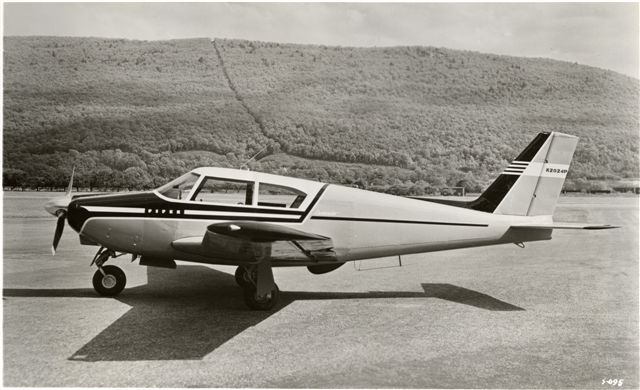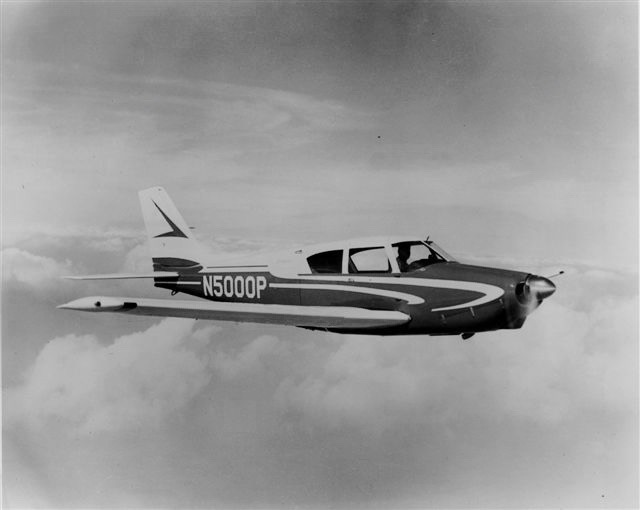

The PA-24 was developed by Piper’s engineers from a preliminary design by Al Mooney. It is a single-engine, 4-place, low-wing monoplane of all-metal construction, with retractable tricycle landing gear. It is operated by a single pilot and is certified for VFR and IFR flight. Two prototypes were built.

The first production PA-24 Comanche made its first flight on 27 September 1957. There were some changes from the prototypes, most noticeable the trailing-link nose gear strut had been replaced with simpler oleo strut.
The PA-24 (later designated PA-24-180, reflecting its horsepower rating) is 24 feet, 9 inches (7,544 meters) long with a wingspan of 36 feet (10.973 meters) and overall height of 7 feet, 4 inches (2.235 meters). Empty weight, depending on installed optional equipment, is 1,530 pounds (694 kilograms) and maximum gross weight is 2,550 pounds (1,157 kilograms).


The PA-24-180 has a cruise speed of 139 knots (160 miles per hour/257 kilometers per hour) at 75% power, at 8,000 feet (2,438 meters). Its maximum speed is 145 knots (167 miles per hour/269 kilometers per hour) at Sea Level. With a fuel capacity of 60 gallons (227 liters), the PA-24 has a range of 782 nautical miles (900 miles/1,448 kilometers. Its service ceiling is 18,800 feet (5,730 meters).
The Piper PA-24 Comanche was produced in several variants from 1957 until 1972, when the Lock Haven factory was destroyed by flooding. A total of 4,857 PA-24s were built. Of these, 1,143 were 180-horsepower PA-24-180 Comanches.
The prototype PA-24, N2024P, has been registered to John C. Codman, Medway, New York, since 24 October 1978. The FAA registration and airworthiness certificate are current.
The first production PA-24, N5000P, with its original Lycoming engine, was exported to Canada. Its U.S. registration was cancelled 3 June 2003.
© 2018, Bryan R. Swopes
Great article, awesome website! Yesterday discovered. 🙂
Thanks a lot and keep it rollin! 😀
One of my first flights was in a Comanche some 45 years ago. I had the good fortune to pump gas at an FBO on summer vacation. An owner invited me up for a spin in his Comanche. What an incredibly stable and easy airplane to fly. The owner impressed upon me some lessons I still use to this day as an airline pilot.
A friend had access to one of these from his friend. He used to take me up occasionally. I had a few hours of instruction, but never finished my privates license. I remember thinking this thing was hot compared to a Cessna 152, constant speed prop and retractable gear, Wow, I was impressed.
The Piper pilot was J Arlington Myers , I worked for several years under him when he was Chief of flight test.